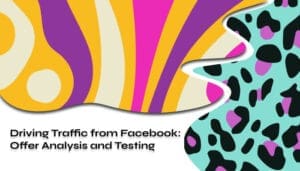Generating new ideas, approaches, and creatives is an integral and quite significant part of working in affiliate marketing. However, each of such new ideas or theories, of course, needs to be carefully examined and tested. But how to do it quickly and effectively? There are many tools for this, and today we decided to talk about one of the most popular ones – A/B testing.
What is A/B testing?
A/B testing is, first and foremost, a practical marketing tool to enhance the efficiency of your advertising campaign or resource as a whole. A study by Unbounce found that companies that implemented A/B testing saw an average conversion rate increase of 90%. By correctly using this tool, you can increase conversion rates or determine the best components of your creatives.
Who needs A/B testing and why?
The need for A/B testing is easiest to explain through an example of its use. For instance, you have already launched an advertising campaign. Traffic is coming in, but it’s not delivering the desired results in terms of effectiveness. Yes, it might be the case that people are facing the choice overload effect. However, sooner or later, you’ll likely consider the need to make some changes, aiming to improve performance without a doubt. If you consider doing that, it means that you are on the right path to understanding how digital marketing or affiliate marketing really work on different platforms like Pinterest or any other.
This leads to ideas about what to change, what to fix, and what to remove. New variations of headlines, images, or video content may also come to mind. However, unfortunately, not everything we come up with will necessarily be highly effective and conversion-driving. It is precisely to test such hypotheses and their impact on results that we conduct A/B tests. A/B testing can also work for industries like betting which is not only about sports betting.
As for who needs these A/B tests, the answer is everyone. In short, they are valuable to product managers, marketers, product designers, webmasters, and anyone seeking to improve the performance of their product, service, or resource.
When are A/B tests conducted?
In what cases are A/B tests conducted:
- When it is necessary to obtain reliable data on the quality of changes;
- When there is enough time to conduct the test;
- When there are enough users (traffic) for data analysis;
- When it is the best way to gather data for decision-making regarding innovations.
Conducting tests with low traffic flow, insufficient time for testing, or in any other case would not be appropriate because important metrics and data could easily be missed due to low metric sensitivity or lack of data. Alternatively, waiting for test results for several months is an option, although in such a case, the need for this kind of tool diminishes, as its main purpose is to quickly provide objective data and make decisions in a short timeframe.
Avoiding Common Mistakes
Here’s the updated version of the article incorporating resources for beginners:
A/B Testing: Optimizing Performance Through Data
Generating new ideas is crucial in affiliate marketing, but validating their effectiveness is equally important. A/B testing is a powerful tool for making data-driven decisions and optimizing your campaigns.
What is A/B Testing?
A/B testing, also known as split testing, compares two versions of a variable to see which performs better. This variable could be a headline, image, call-to-action button, or even the entire layout of your landing page. By showing different versions to random samples of your audience, you can gather data on which one resonates more and drives higher conversion rates.
A study by Unbounce found that companies using A/B testing saw an average conversion rate increase of 90%. However, it’s important to remember that A/B testing isn’t a magic solution for every situation.
When is A/B Testing Most Effective?
A/B testing shines when you have:
- Measurable Goals: You need clear goals like click-through rates, sign-ups, or purchases to track improvement.
- Sufficient Traffic: A/B tests require a decent amount of traffic to ensure statistically significant results. With low traffic, random fluctuations can skew the data.
- Multiple Variations: The more variations you test, the more insights you can gain. However, too many variations can dilute the impact of each one.
More to read & use
Resources for beginners:
- Free A/B testing tools:
- A/B testing tutorials:
Examples of Successful A/B Testing in Different Fields
If you think it’s a lame thing to do, you’re wrong, because A/B testing has proven its effectiveness in various fields:
- E-commerce. Website redesign: Ebook retailer Bukvybag A/B tested headlines, discovering a variant focusing on “exploration and adventure” increased orders by 45% compared to generic headlines.
- Website Design. Call to action button: Social media management tool Buffer found a simple change – making their CTA button larger and red – resulted in a 35% boost in signups.
- Email Marketing. Subject Line: Streaming service Netflix A/B tested subject lines for their emails, discovering personalized greetings like “Hey [Name]” led to significantly higher open rates.
Conclusion
A/B testing is an effective tool for testing new theories, but it’s not a magic wand. Based on the data obtained after testing and timely data analysis, the most objective and effective decision is made. By comparing versions, you can see if a new design, headline, or feature actually hurts conversion rates compared to the original. This helps you avoid implementing changes that might harm your campaign performance. The tool also helps avoid mistakes rather than pointing to a “conversion” button. Therefore, as with everything, knowing how to work with it is essential, and then everything will work out.
Do you know who did not conduct A/B testing? Dove — when they launched a commercial with a black woman turning to a white woman after using their soap. What a bad advertisement!











